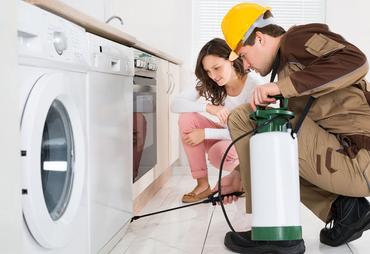Despite all the changes that the coronavirus pandemic has caused in the real estate industry, one thing hasn’t changed – you’re still going to need a home appraisal before you can close. But certain restrictions that have been put in place including social distancing have made it difficult to carry out an appraisal in the traditional fashion. Luckily, the industry has been able to quickly adapt to keep appraisals moving forward. Here’s what you need to know.

Home Appraisals During the COVID-19 Pandemic
What is an appraisal?
A home appraisal is a crucial step in the closing process. Your lender will order an appraisal of the property as part of the loan application process. A professional appraiser will evaluate your home to determine its fair market value, which could impact your ability to qualify for a loan if the loan amount exceeds the value of the home.
How does a typical appraisal work?
During a typical appraisal, before the pandemic forced many communities to shelter in place, appraisers would conduct their evaluation on-site. The appraiser would go to the home and inspect it. Using this information as well as comps and other data, the appraiser would determine the value of the home.
How has a typical appraisal changed?
Since the federal government continues to suggest social distancing, appraisers have had to modify how the process happens. Most appraisers will ask the seller to leave the home before they enter, and the appraiser will most likely be wearing both a mask and gloves. They may also ask the seller to thoroughly disinfect surfaces like doorknobs and light switches before they enter and to have cleaning products like soap and hand sanitizer available.
Are other appraisal options available?
Given the unique circumstances under which we’re all currently living, many appraisers have adopted alternative appraisal strategies to determine the value of the home. These alternatives have always been available, and have been used in certain situations when taking into account the loan amount, the borrower’s creditworthiness, and the risk to the lender. The most common alternatives are desktop appraisals and drive-by appraisals.
What is a desktop appraisal?
A desktop appraisal is exactly what it sounds like – the appraiser can do all the work from their desk. The appraiser will use available data such as market research, tax records, MLS records, and comps to determine the value of a property. Be sure to pay attention to recent comps before making an offer, however. Your offer should match recent sale prices in the neighborhood. If it’s higher, it will be more difficult for the appraiser to evaluate why the home is worth more without seeing it in person. You could potentially lose your financing as a result.
What is a drive-by appraisal?
A drive-by appraisal can be used in conjunction with a desktop appraisal to determine the value of the home. In a drive-by appraisal, the appraiser might also rely on photos of the house, an inspection report conducted by another party, a virtual tour of the home given by the seller, or even a drive-by of the property.
What’s the bottom line?
The bottom line is that even with all the restrictions in place, buyers should not have a problem getting an appraisal on a home. Appraisers have a variety of tools they can use to determine the value of a home and keep the closing process moving forward smoothly and on schedule.
Compliments of Virtual Results




 Sign up today to get access to 1000's of homes we have available!
Sign up today to get access to 1000's of homes we have available!